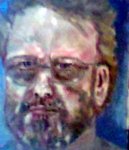Every three weeks my workshop on urban complexity attracts more than twenty urban scholars and their PhD students from several universities in Israel. The workshop has been meeting for some 18 months now and each meeting is divided into two parts. The first part is devoted to a conference style lecture – albeit we devote to the lecture and to the discussion that follows 90 minutes. The next 90 minutes is devoted to the actual workshop at which we ponder questions raised by one of our participants.
This week we met at Tel Aviv University and we heard a lecture by a Hebrew University geographer on his Urban Sim modeling efforts. Urban Sim is a platform that permits interactions among several modules. If I understand it correctly a transportation model is at its heart and it plays a central role in the spatial allocation of activities be altering accessibility.
I remember that as a student I heard pronouncements concerning the death of the large urban models. The main criticism of these models was the inability to track the causes of various results generated by the models. The multiplicity of equations and variables made it impossible to identify which variable, at what value threshold and in which equation was responsible for a particular result.
The last few years seem to witness a revival of the large urban models. I am not sure what caused the revival. However, simulation is much easier with today’s computers. Furthermore, data is plentiful and available at a fine spatial resolution. There are 70 research groups around the world developing and refining Urban Sim based models alone. There is an entire community of such researchers sharing experiences, insights and knowledge gained.
And yet, some of the old criticisms of the large urban models can be leveled at the new models as well. During our discussion this weeks some people were concerned about the uneven sophistication of the various modules of the model. The transportation model is quite detailed and well calibrated. The model representing real-estate supply, mostly housing, is quite unsophisticated and there are no prices to speak of. The demand for housing is also modeling quite simply. Others were concerned that the results are not caused by the values of certain key variables, but that the results are predicated on the functional forms of certain non-linear equations.
This led us to an intense discussion of the role of fast and slow variables in generating cusps and the applicability of the concept of phase transitions to urban spatial phenomena. Since we did not come to a conclusion, we will continue our discussions next time.



